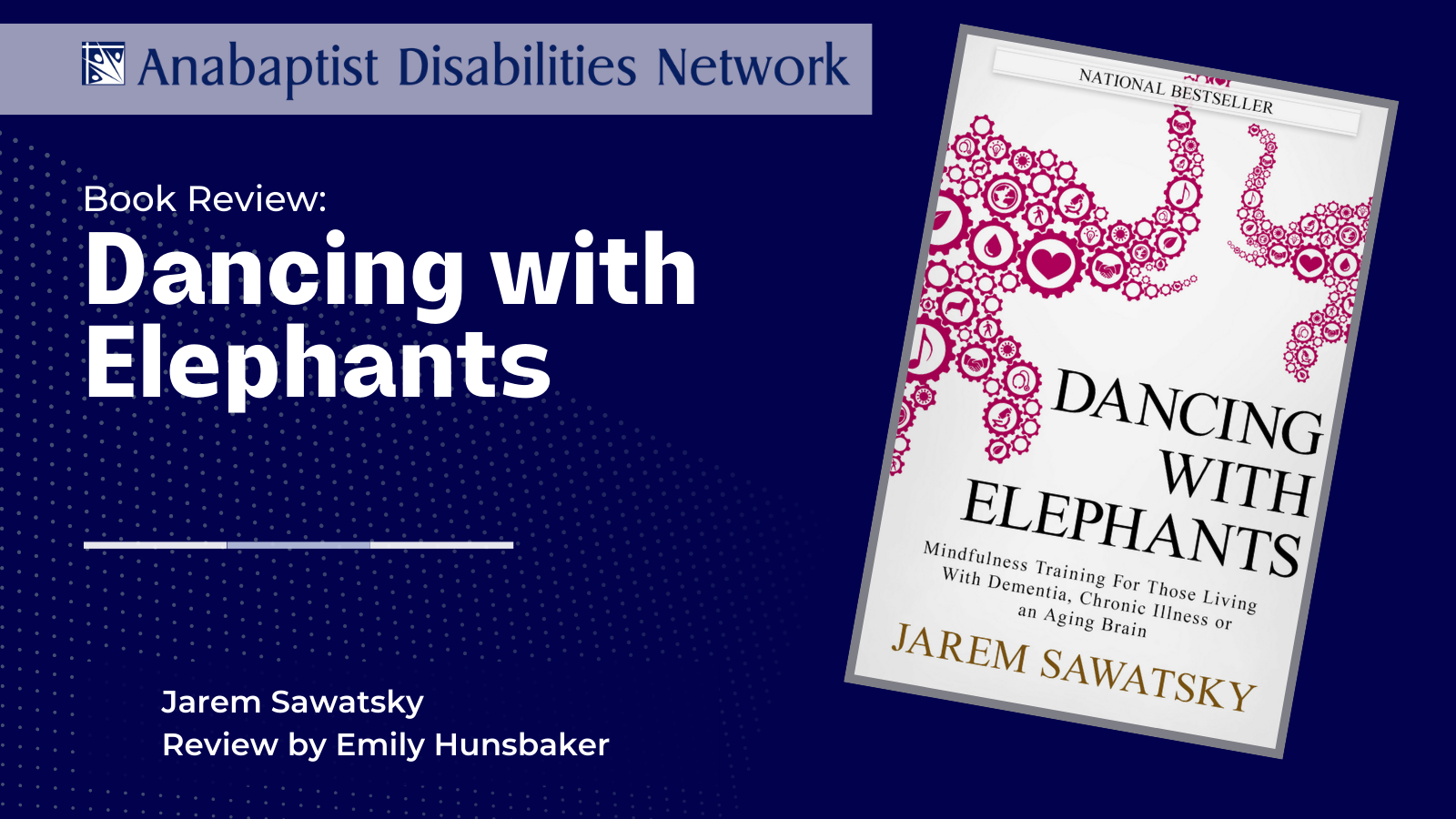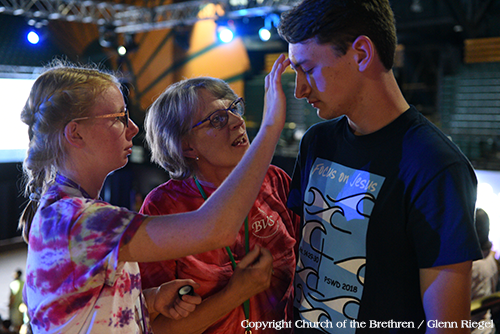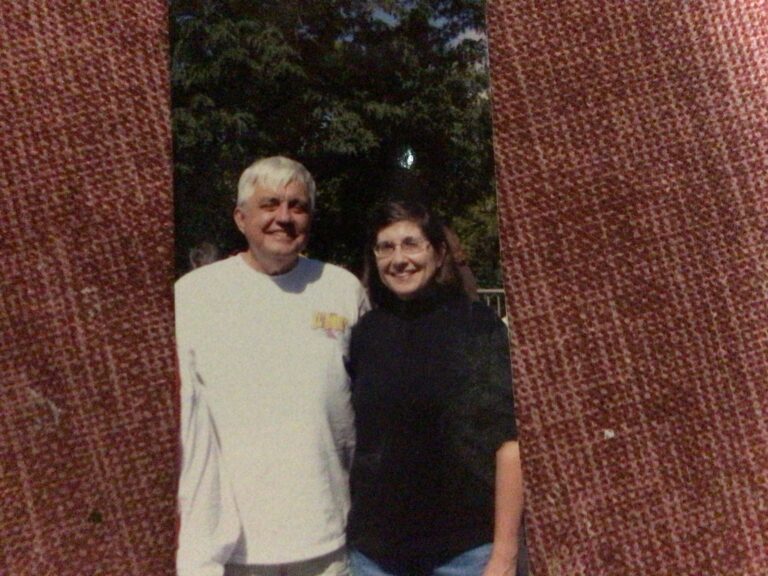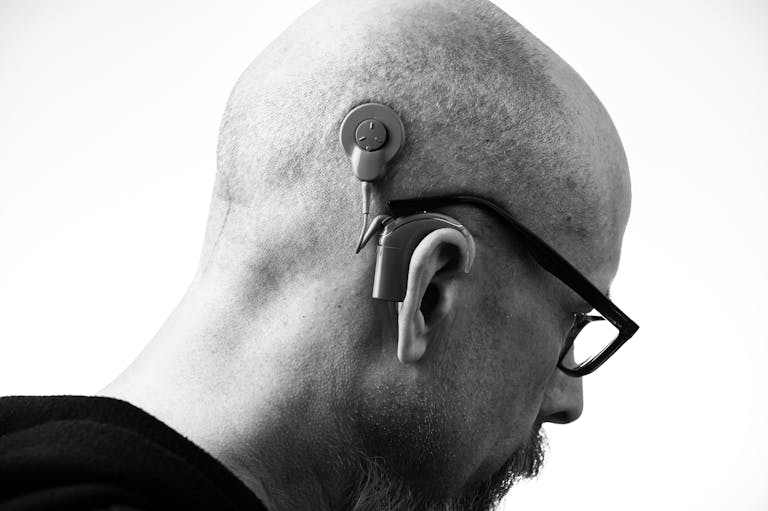Book Review: Dancing with Elephants
Mindfulness Training for Those Living with Dementia, Chronic Illness, or an Aging Brain
A chronic illness diagnosis can feel like an elephant sitting on your chest, making breathing difficult and moving forward impossible. When talking with family and friends, acknowledging this elephant in the room can seem overwhelming, and well-meaning promises of God’s healing fall flat in the face of a terminal or chronic diagnosis. Enter Dancing with Elephants, a short book that invites readers to not only acknowledge the elephant but to dance with it: to find acceptance and joy amid an illness that has no cure. Jarem Sawatsky writes from a place of lived experience as both a peacemaker and a person living with Huntington’s disease. He spent his career studying and training people in conflict transformation, and he brings this perspective of active nonviolence to his relationship with his chronic and terminal illness. Heavily influenced by the engaged Buddhism of Zen Buddhist master Thich Nhat Hanh, Dancing with Elephants offers a reframing of healing from illness: it is “not the kind of healing that takes away the disease, but the kind of healing that awakens the heart to love” (p. 16). This nonviolent approach to living with chronic illness makes Dancing with Elephants a must-read resource for Anabaptists.
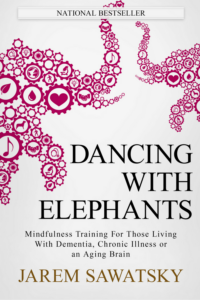
Dancing with Elephants is a 207-page resource with five main sections, each focusing on a different aspect of a nonviolent approach to living with chronic illness: valuing a life that isn’t what we hoped for, cultivating happiness in ourselves and our supports, loving those around us, healing with intentional communication, and intentionally choosing our perspectives.
Sawatsky’s writing style is simple yet poetic. Though the material requires reflection by the reader, the words are written in a way the average person can comprehend. Through his stories, interviews, and mindfulness practices, Sawatsky aptly communicates a healthy kind of hopefulness for those impacted by chronic and terminal illnesses.
This hope is fundamentally Anabaptist. Sawatsky calls forth a theology rooted in peace, not violence. Instead of pitting the self against the body, framing chronic illness as a disease to be fought and the imperfect body an enemy, this theology offers a way to find peace amid the pain, and it offers a perspective that focuses on healing the relationship between us and our bodies. Additionally, Sawatsky invites readers to intentionally build circles of support that extend beyond the immediate family. Following an Anabaptist model of community, these circles of care should help readers focus on holistic care and hold readers accountable to what can be controlled and what needs to be released. This change in perspective and reliance on the community is essential to maintaining a high quality of life when living with a chronic illness.
Engaging with chronic and terminal illness is a delicate dance—one that can cause pain or joy. With his lifetime of research and experience in active peacebuilding paired with a lifetime of being affected by a family member’s chronic illness and his own diagnosis, Sawatsky offers a beautifully written, accessible guide to dancing with the elephant of chronic illness and embracing a life well-lived.


